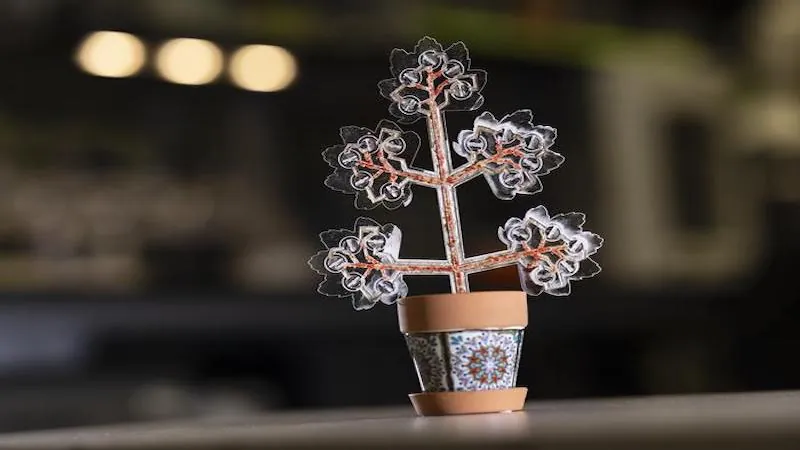
Revolutionary Artificial Plants Could Transform Indoor Air Quality and Generate Electricity!
2024-11-02
Author: Wei Ling
Introduction
As indoor living becomes the norm—Americans spend a staggering 90% of their time indoors—concerns about air quality have escalated dramatically. The air pollutants we encounter at home, work, and school can lead to serious health issues, making effective air purification solutions more crucial than ever. Despite the options available, traditional air purifiers can be costly, bulky, and often require regular filter changes.
The Research Behind Artificial Plants
Enter Binghamton University’s Professor Seokheun "Sean" Choi and his dedicated Ph.D. student Maryam Rezaie. Their groundbreaking research has paved the way for artificial plants that not only purify indoor air but also have the potential to generate electricity! Building on their prior work with bacteria-powered biobatteries, they envisioned these innovative artificial plants as a means to harness carbon dioxide for photosynthesis while providing significant oxygen output.
Efficiency in Carbon Dioxide Reduction
In fact, their artificial plants can achieve a remarkable 90% reduction in carbon dioxide levels—far exceeding the typical 10% reduction offered by traditional houseplants. This revolutionary work earned recognition in the journal *Advanced Sustainable Systems,* partially funded by the Office of Naval Research.
Urgency of the Research
Professor Choi emphasized the urgency of their project, especially in light of the COVID-19 pandemic, which heightened our awareness of indoor air quality. "Toxic materials can come from various sources, like building materials and even carpets,” noted Choi. “We continuously exhale carbon dioxide, contributing to indoor air pollution, while indoor cooking also factors in."
Development of Prototypes
The duo crafted the initial artificial leaves as a playful experiment but soon realized its broader implications. They successfully constructed the first prototype comprising five leaves, rigorously testing its efficacy in capturing carbon dioxide and producing oxygen.
Electric Power Generation
Currently, these artificial plants generate around 140 microwatts of electrical power, which, while beneficial, is a secondary feature. Choi is optimistic about enhancing the technology to reach at least 1 milliwatt of power output in the future. Imagine charging devices like smartphones or other practical applications with the electricity produced by these artificial plants!
Future Innovations
Future innovations may include experimenting with various bacterial species to ensure longevity and devising efficient systems for water and nutrient delivery to enhance maintenance.
Conclusion
“With some fine-tuning, these artificial plants could become a staple in every home,” Choi stated confidently. "Their benefits are clear and could significantly improve our quality of life." As indoor air quality continues to table discussions and innovation, these artificial plants may very well herald a new era of home health technology—a true blend of nature and science harmonizing for a cleaner and greener world.


 Brasil (PT)
Brasil (PT)
 Canada (EN)
Canada (EN)
 Chile (ES)
Chile (ES)
 Česko (CS)
Česko (CS)
 대한민국 (KO)
대한민국 (KO)
 España (ES)
España (ES)
 France (FR)
France (FR)
 Hong Kong (EN)
Hong Kong (EN)
 Italia (IT)
Italia (IT)
 日本 (JA)
日本 (JA)
 Magyarország (HU)
Magyarország (HU)
 Norge (NO)
Norge (NO)
 Polska (PL)
Polska (PL)
 Schweiz (DE)
Schweiz (DE)
 Singapore (EN)
Singapore (EN)
 Sverige (SV)
Sverige (SV)
 Suomi (FI)
Suomi (FI)
 Türkiye (TR)
Türkiye (TR)
 الإمارات العربية المتحدة (AR)
الإمارات العربية المتحدة (AR)